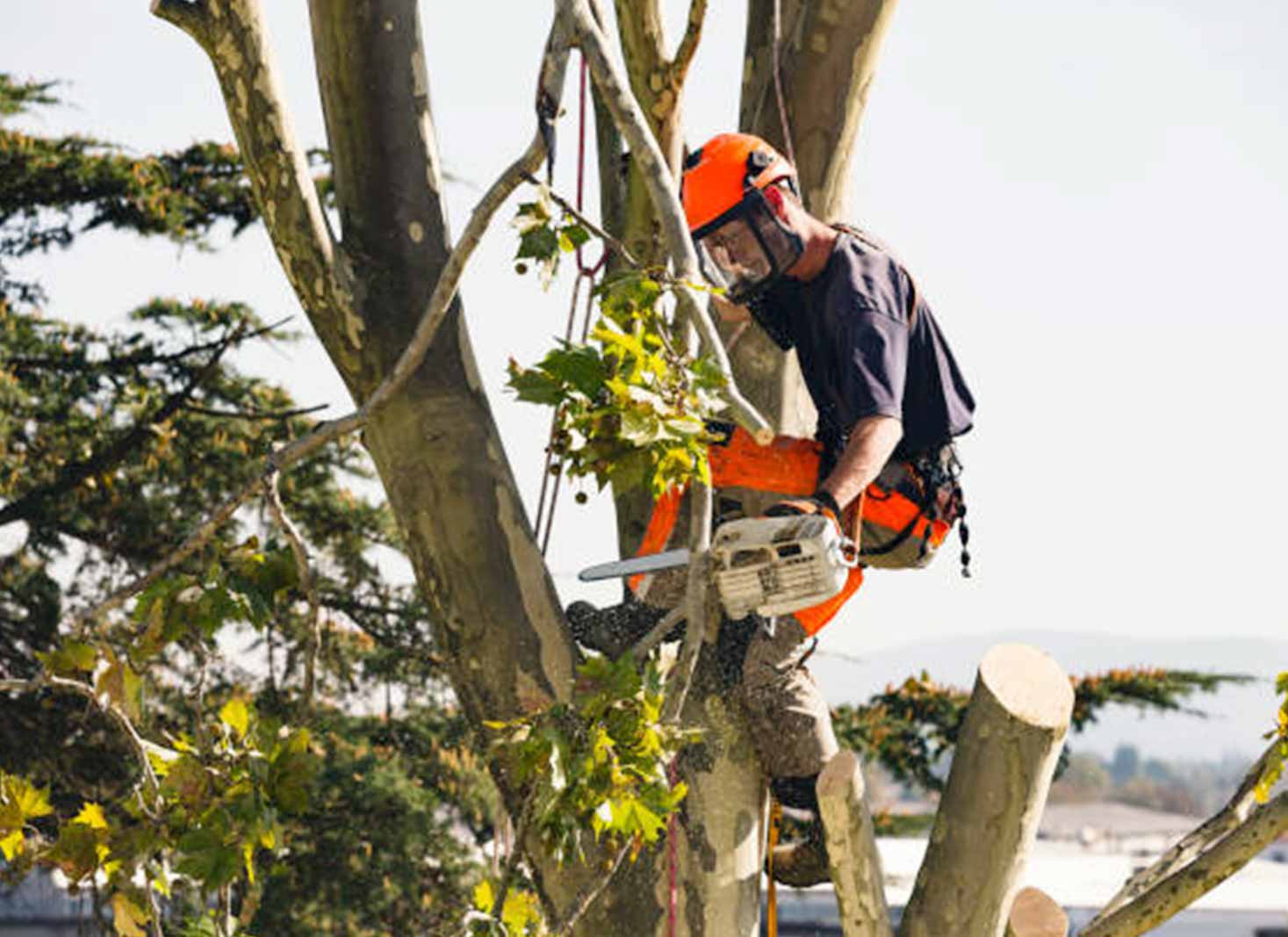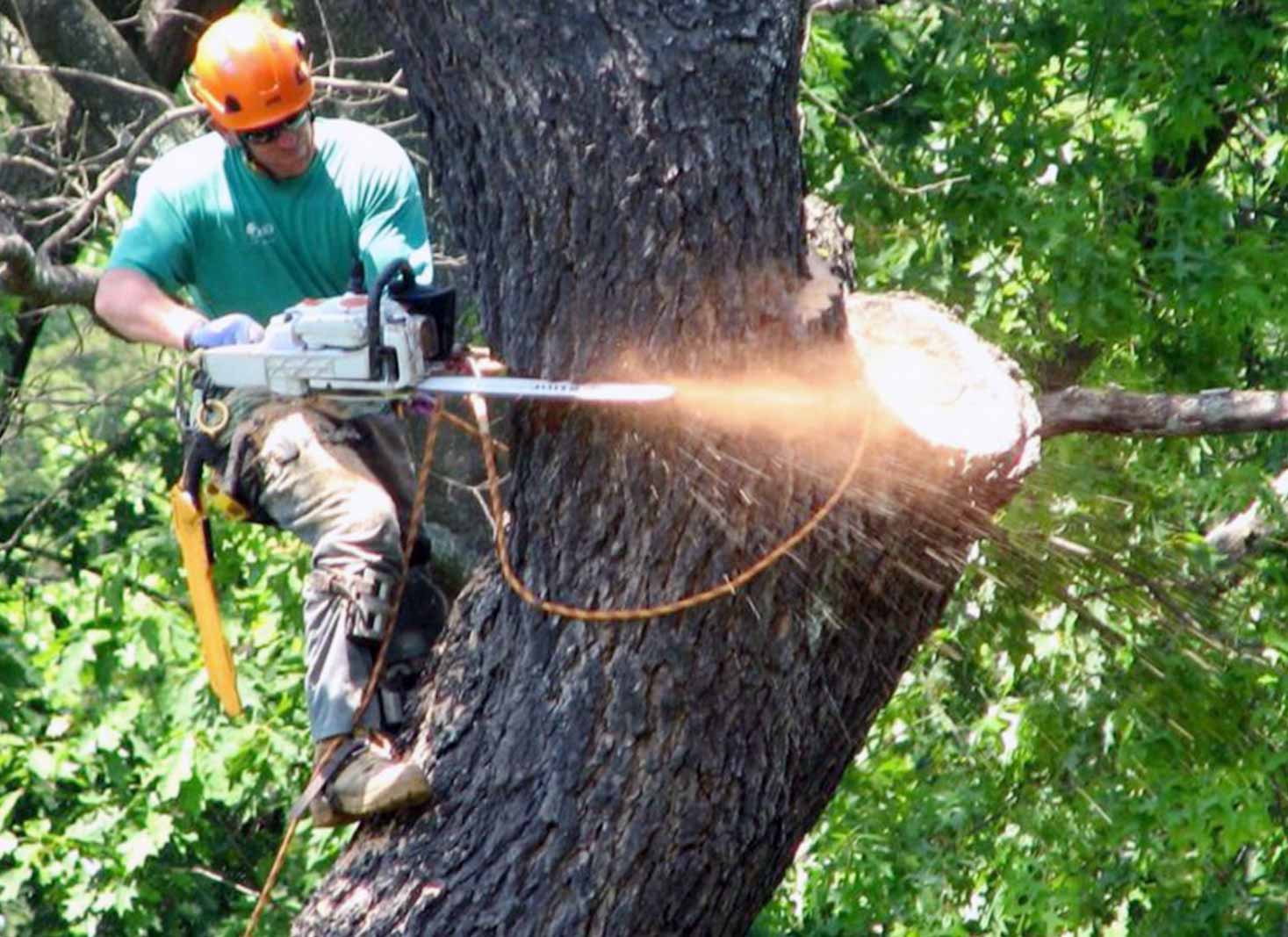New South Wales is one of the leafiest states in Australia, with many cities and regions boasting lush canopy cover and thriving urban forests.
Go Tree Quotes and its partners have been serving customers across New South Wales and are synonymous with great tree care.
From tree removal, trimming, cable bracing, stump grinding, mulching and more, Go Tree Quotes is your go-to service for all tree maintenance tasks.
See our list of locations we service below.
The cost of removing a tree in NSW is majorly determined by the size of the tree to be removed. Taller, more mature trees cost more as they have deeper roots, and wider trunks and require more labour than their smaller, less mature counterparts.
Other factors that may affect the cost of tree removal include the location of the tree on the property, whether the tree is dead or alive, and accessibility to the tree.
Here is a quick view of the cost of tree removal in NSW based on the size of the tree.
| Size of the tree | Cost range |
|---|---|
| Small trees (under 10ft) | $620 |
| Medium trees (10ft to 25ft) | $1,300 |
| Large trees (25ft to 40ft) | $2,200 |
| Extra-large trees (40ft and above) | $3,500 |
You need a permit before cutting down any tree on your property in NSW. This requirement for a permit was put in place to protect important tree species in NSW and Australia as a whole.
The rules guiding tree removal and permits in NSW are usually determined by the Local councils which are guided by the Tree Preservation Orders (TPOs) and Local Environment Plans (LEPs). There are exceptions when a permit won’t be required before tree removal.
For instance, if you live in a fire zone area or next to 10/50 vegetation clearing entitlement areas, you can cut down trees within 10m and vegetation within 50m of your property without a permit. Dead, fallen, invasive and hazardous trees can also be cut without a permit.
The penalty for removing a tree without a permit in New South Wales is usually a hefty fine. The fine for unlawful tree removal is usually dependent on different factors such as the type of tree removed and the number of trees affected. The fine can be anywhere from $5,000 to $110,000 based on the situation.
Removing a tree without a permit in NSW is a criminal offence as it is in direct violation of the TPO set by the local authorities. This is an exception if the tree does not require a permit to be removed. However, make sure to confirm with your council to avoid any mistakes.
Removing a heritage tree or significant tree, even if it’s on your property, can attract hefty fines from $1,000 up to $1.1 million and/ or a criminal conviction depending on the value of the tree removed and the number of trees removed.

Although permits are required for tree removal in NSW, certain trees can be cut down without permission. Dead trees, Fallen trees, Trees in fire danger zones, Trees that can cause property damage, Storm damage trees, hazardous trees and Invasive/pest tree species on your property can be cut without permits.
Certain tree species are exempted from Tree Preservation Orders (TPOs) in NSW and can be cut without permission or a permit. These tree species usually have little to no botanical value in Australia such as invasive or pest tree species.
Examples of trees that can be cut down without permission in NSW include;
These tree species and many more can be removed without a tree permit. However, it is advised that homeowners clarify the tree species from a professional arborist before removal to avoid misidentifying a tree and getting fined.
Certain tree species are protected in NSW and Australia in general. A protected tree is defined as a tree that requires a separate permit or development consent for pruning or removal.
These trees are protected due to their great botanical value in Australia and require a permit before they can be pruned or removed. Protected trees in Australia are usually; Naturally Growing/Native trees, endangered species, trees under Government Programs, trees on boundary lines and Old Historically significant Trees.
Examples of protected trees in New South Wales include;

To remove certain trees in NSW, you need to apply for a tree permit at your local council. Different trees require different permits or development consents so you need to research the type of tree you have. For instance, heritage-listed trees require development consent, while trees protected under the development control plan require a permit.
When applying for a permit to remove a protected tree on private property, you will be required to place an application for the tree removal which includes a $90 application fee.
If you are applying for development consent to remove a heritage-listed tree. You will need to place a development application which includes a $129 application and a $550 notification fee.